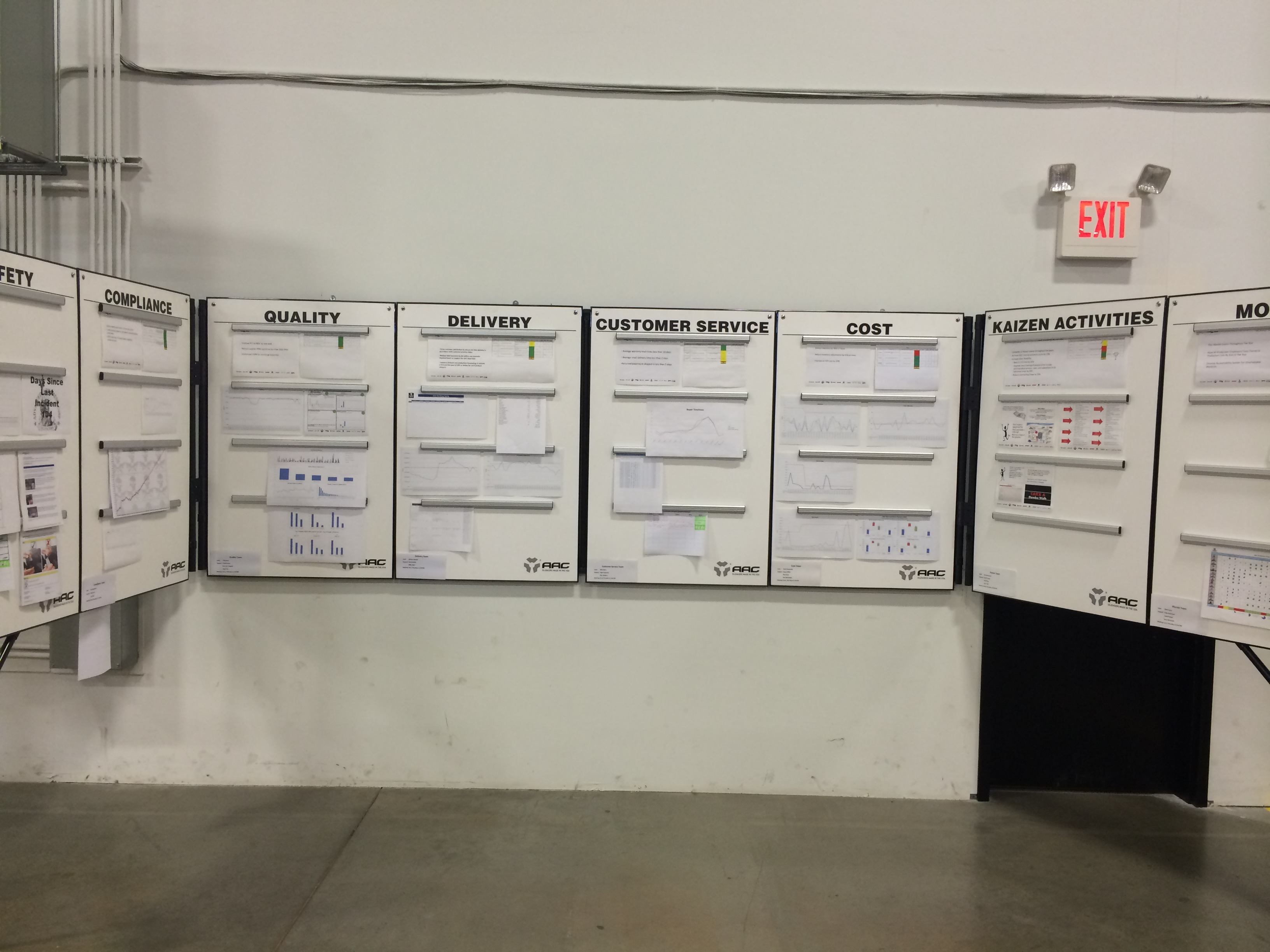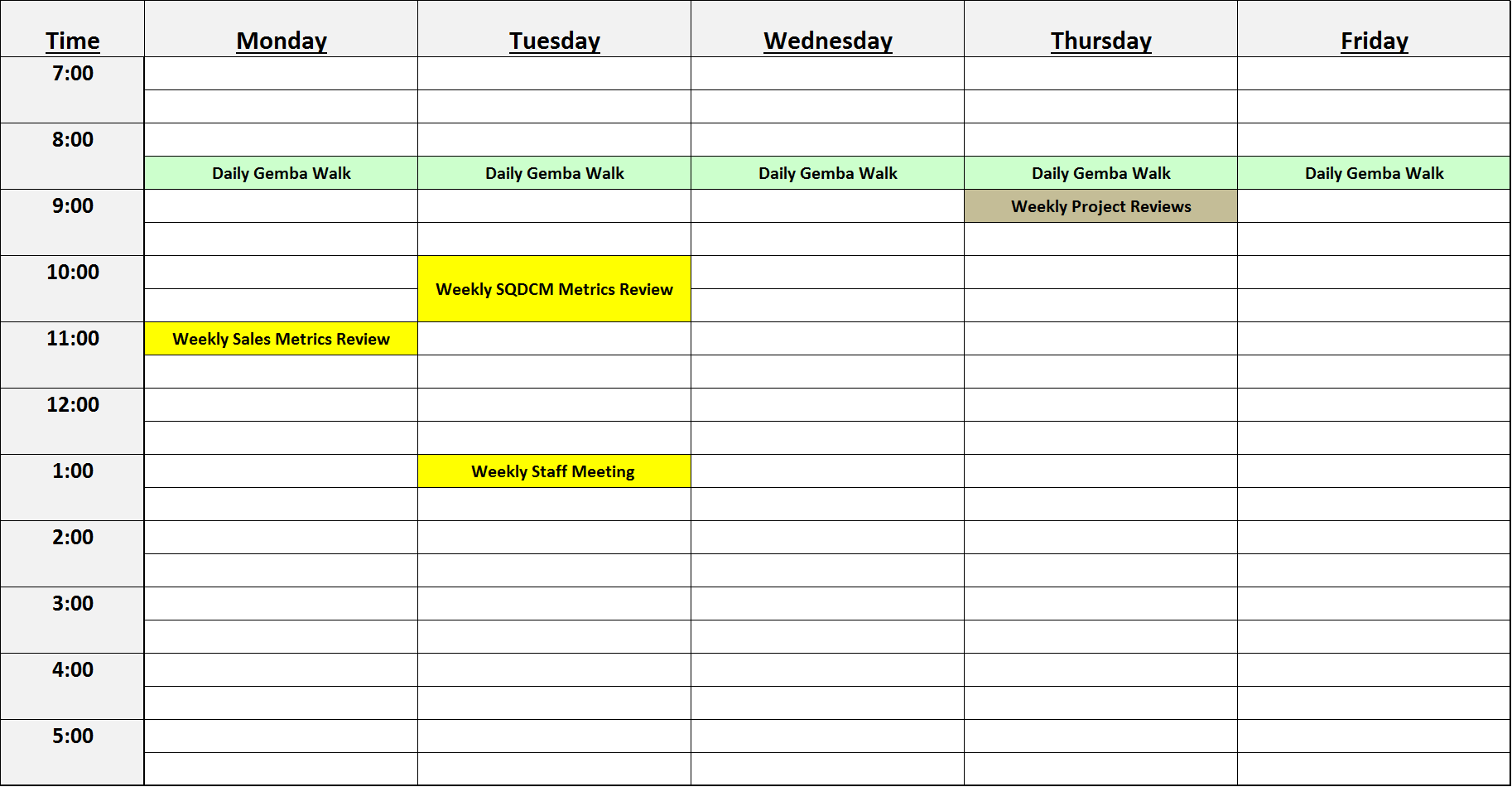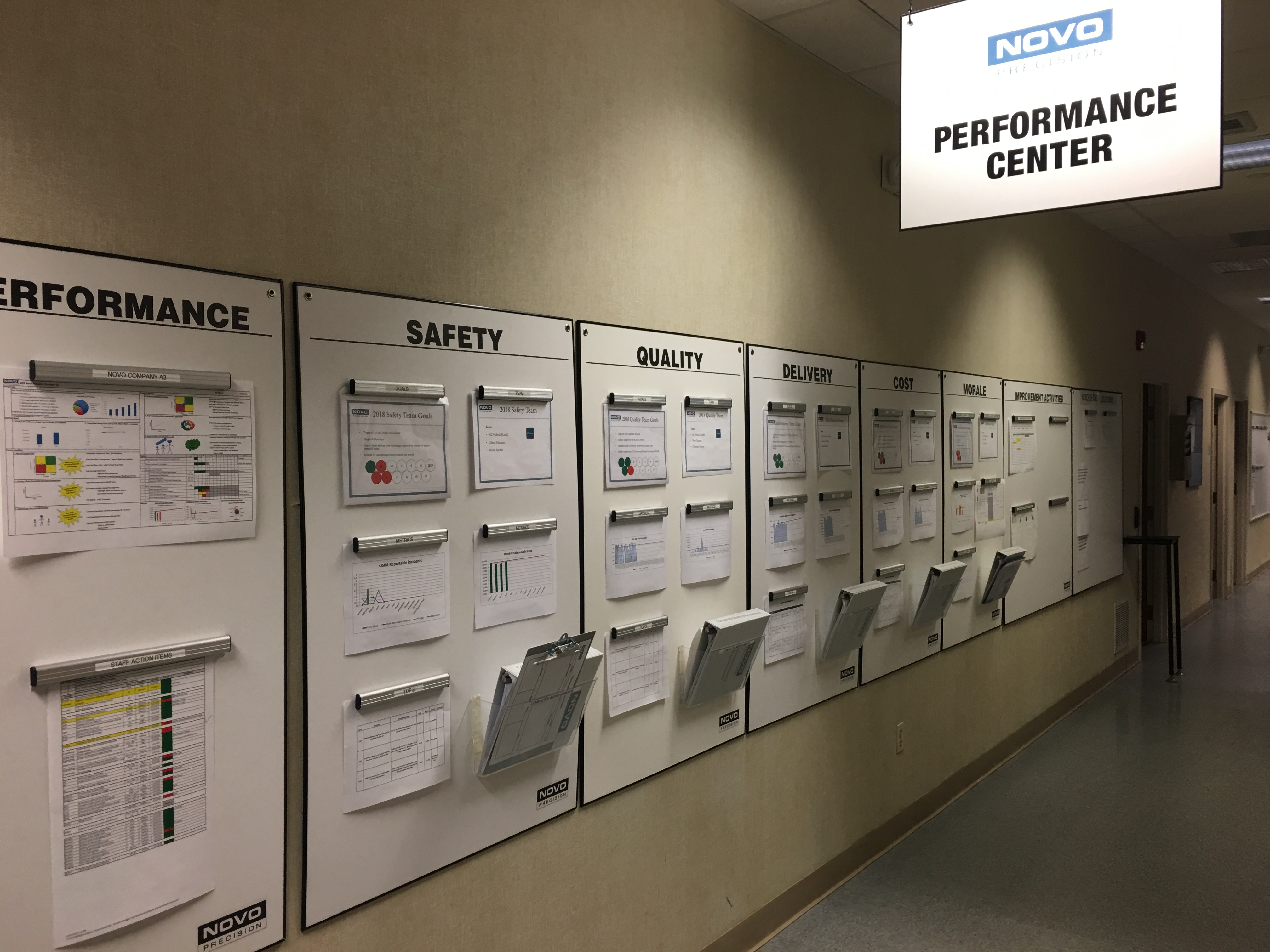Lean Management | What is Operational Cadence?
Posted on by Bill Hazard
This is the first in a series of blog posts around Lean Manufacturing Tools and how to incorporate them onto your shop floor. Not only will we discuss the theories around lean management systems, but we will also dig into different lean manufacturing tools in the marketplace ie. Lean Metrics Stands.
An Operational Management Cadence is Standardized Work for how company leadership manages a business. It is a Lean Tool that leadership should use to systematically drive a business, and if done effectively, will result in strong performance over time. The Management Cadence provides clarity, alignment, and urgency around the critical initiatives for the company and provides consistency in how a company is managed. There should be an Annual Operating Cadence, Monthly Operating Cadence, and a Weekly Operating Cadence, all of which have different purposes.
Examples of Annual Lean Management in Operational Cadence:
- 5 Year Operating Plan
- Annual Operating Plan (AOP)/ Budget
- Human Resources Planning
- Quarterly Board Reviews
Examples of Monthly Lean Management in Operational Cadence:
- Monthly P&L Review
- Monthly All Hands Meeting
- Monthly Financial Summary to Leadership & Board
Examples of Daily / Monthly Lean Management in Operational Cadence:
- Daily Gemba Walk
- Weekly Staff Meeting
- Weekly KPI / Metrics Review
- Weekly Sales & Marketing KPI / Metrics Review
- Weekly Project Review
This is not an exhaustive list, and as a company grows and operates at a higher level, different components should be added / subtracted with the goal of optimizing company effectiveness and improvement speed. As a company gets larger, it is helpful to assign the management of the corporate calendar to a specific person to ensure organization and consistency.
Caution: If you try to do too much, too fast, then the management cadence will not be effective or optimized. You are better off doing less and focusing on performing each task at a higher level. Nothing will ever be perfect, and each of these lean tools should continue to improve & evolve over time. As this happens, you would systematically evolve the Management Cadence.
Sample Lean Tool: Example of a Central Metrics Board or Obeya Room used for Lean Management:

In this application, the central metrics board located on the shop floor folded out, as we were limited in wall space. This board was used in the Daily Gemba Walk as well as in the Weekly Metrics Review for transparency in progress toward reaching organizational goals.
The most powerful lean tool for enabling lean management is the Daily Shop Floor or Gemba Walk. I have not seen a high-level operation that does not use a Daily Gemba Review, as this is where you will clearly see the biggest internal challenges in the company. There are many benefits including:
- Setting very clear targets and measuring performance versus these targets
- Having a balanced approach around Safety, Quality, Delivery, Cost, and Morale (SQDCM)
- Having area leadership report out daily on performance
- Getting an entire leadership team on the shop floor to understand performance and problems
- Developing a strategy to improve performance
- Assigning clear actions to all functional areas to support shop floor
This is just a subset of benefits and usually you will see an immediate performance impact through just measuring. It is a very true saying: “What gets measured – gets done!”
Here is an example of my Current Weekly Management Cadence:

This has evolved over time and I very consciously work to minimize the amount of time that my team spends in meetings. I have worked in senior leadership positions in larger companies where there were way too many meetings, which impacts the ability to get problems solved and support the shop floor.
Approaching a weekly management cadence in a systematic and standardized way is very important. This allows you to apply Plan-Do-Check-Act methodology to your own company management. You can systematically improve your performance as needs arise, and you can develop a more consistent operational approach for your team.
If you have any questions, feel free to leave a comment or Contact Bill directly through our Website Contact Form. To take a look at the all new Novo Metrics Stand click here.

